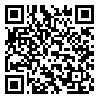Fri, Nov 7, 2025
| فارسی
Volume 13, Issue 1 (Spring 2011)
Advances in Cognitive Sciences 2011, 13(1): 81-92 |
Back to browse issues page
Download citation:
BibTeX | RIS | EndNote | Medlars | ProCite | Reference Manager | RefWorks
Send citation to:



BibTeX | RIS | EndNote | Medlars | ProCite | Reference Manager | RefWorks
Send citation to:
Piri M, Nasehi M, Pournaghshband M, Shahin M, Zarrindast M R. Dopamine D1 and NMDA Receptors Interaction in the Dorsal Hippocampus of Rats in the Elevated Plus Maze Test of Anxiety. Advances in Cognitive Sciences 2011; 13 (1) :81-92
URL: http://icssjournal.ir/article-1-321-en.html
URL: http://icssjournal.ir/article-1-321-en.html
Morteza Piri *1 
 , Mohamad Nasehi2
, Mohamad Nasehi2 
 , Mahnaz Pournaghshband3
, Mahnaz Pournaghshband3 
 , Maryam-sadat Shahin4
, Maryam-sadat Shahin4 
 , Mohammad Reza Zarrindast5
, Mohammad Reza Zarrindast5 


 , Mohamad Nasehi2
, Mohamad Nasehi2 
 , Mahnaz Pournaghshband3
, Mahnaz Pournaghshband3 
 , Maryam-sadat Shahin4
, Maryam-sadat Shahin4 
 , Mohammad Reza Zarrindast5
, Mohammad Reza Zarrindast5 

1- Islamic Azad University, Ardabil Branch, Ardabil, Iran.
2- Islamic Azad University, Garmsar Branch, Garmsar, Iran.
3- Islamic Azad University, Pharmaceutical Science Branch (IAUPS), Tehran, Iran.
4- Young Researchers Club, Islamic Azad University, Shahr-e-Rey Branch, Rey, Iran.
5- Tehran University of Medical Sciences, Tehran, Iran.
2- Islamic Azad University, Garmsar Branch, Garmsar, Iran.
3- Islamic Azad University, Pharmaceutical Science Branch (IAUPS), Tehran, Iran.
4- Young Researchers Club, Islamic Azad University, Shahr-e-Rey Branch, Rey, Iran.
5- Tehran University of Medical Sciences, Tehran, Iran.
Abstract: (3142 Views)
Objective: In this study the effects of dopaminergic D1 receptor of dorsal hippocampus on anxiety-like behavior induced by stimulation or inhibition of NMDA receptors were investigated in male Wistar rats.
Method: The elevated plus maze was used in the present study, which is an accepted model to examine anxiety-like behaviors in mice and rats.
Results: The results indicate that intra-CA1injection of MK801 (2 μg/rat) induce anxiolytic effects. Intra-CA1 injection of SCH23390 (0.25, 0.5 and 1 μg/rat) by itself has no effect on anxiety-like behaviors, but administration of same doses of SCH23390 before MK801 (1 μg/rat, intra-CA1) potentiate anxiolytic effects of MK801. On the other hand, intra-CA1 injection of NMDA (0.3 and 0.6 μg/rat) or SKF 38393 (3 and 6 μg/rat) by itself induces anxiogenic effects. Injection of different doses of SKF38393 before NMDA potentiated anxiogenic effects of NMDA.
Conclusion: These results show that both NMDA receptor and dopaminergic D1 receptor not only play a part in the modulation of anxiety in the dorsal hippocampus of rats but also have demonstrated a complex interaction as well.
Method: The elevated plus maze was used in the present study, which is an accepted model to examine anxiety-like behaviors in mice and rats.
Results: The results indicate that intra-CA1injection of MK801 (2 μg/rat) induce anxiolytic effects. Intra-CA1 injection of SCH23390 (0.25, 0.5 and 1 μg/rat) by itself has no effect on anxiety-like behaviors, but administration of same doses of SCH23390 before MK801 (1 μg/rat, intra-CA1) potentiate anxiolytic effects of MK801. On the other hand, intra-CA1 injection of NMDA (0.3 and 0.6 μg/rat) or SKF 38393 (3 and 6 μg/rat) by itself induces anxiogenic effects. Injection of different doses of SKF38393 before NMDA potentiated anxiogenic effects of NMDA.
Conclusion: These results show that both NMDA receptor and dopaminergic D1 receptor not only play a part in the modulation of anxiety in the dorsal hippocampus of rats but also have demonstrated a complex interaction as well.
Type of Study: Research |
Subject:
Special
Received: 2010/11/22 | Accepted: 2011/01/21 | Published: 2011/03/21
Received: 2010/11/22 | Accepted: 2011/01/21 | Published: 2011/03/21
Send email to the article author
| Rights and permissions | |
 |
This work is licensed under a Creative Commons Attribution-NonCommercial 4.0 International License. |

